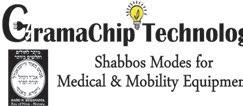JUNE IS MEN’S HEALTH MONTH










Scoliosis screening takes 15 minutes









Make plum salsa for dad












Scoliosis screening takes 15 minutes









Make plum salsa for dad



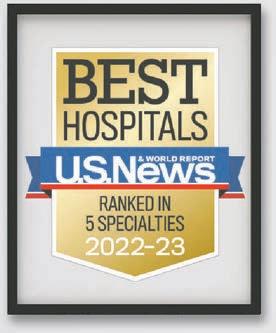
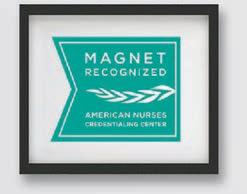


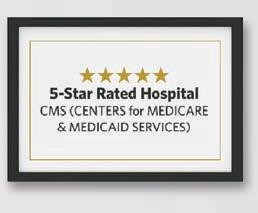






The best medicine is rooted in something more than high science. It’s a culture that reveres your humanity as much as your physiology. And you can find it at St. Francis Hospital & Heart Center®, Long Island’s most awarded hospital. So, if you need high-quality, compassionate care, you can have the utmost confidence in trusting us for your care.
(866) MY-LI-DOC | StFrancisAwards.org







Men’s Health Month, observed annually in June, serves as a vital reminder of the unique health challenges faced by men and highlights the importance of proactive healthcare practices. This month-long campaign aims to increase awareness about the top health risks men face, encouraging men to prioritize their well-being and take preventive measures. By understanding these health risks, we can empower men to make informed decisions and lead healthier lives.
Cardiovascular Disease
Cardiovascular disease, including heart attacks and strokes, remains the leading cause of death among men. Contributing factors such as high blood pressure, high cholesterol, obesity, smoking, and a sedentary lifestyle pose significant risks. Men’s Health Month emphasizes the importance of regular exercise, a healthy diet, smoking cessation, and routine check-ups to detect and manage risk factors for cardiovascular disease.
Prostate Cancer
Prostate cancer is one of the most prevalent cancers in men. Raising awareness about the importance of early detection through regular screenings, such as prostate-specific antigen (PSA) tests and digital rectal exams (DRE), can significantly improve outcomes. Men’s Health Month educates men about the risks, symptoms, and screening guidelines, empowering them to make informed decisions about their prostate health.
Testicular Cancer
Although relatively rare, testicular cancer primarily affects younger men between the ages of 15 and 35. By promoting self-examination techniques and encouraging regular medical check-ups, Men’s Health Month helps men identify early warning signs such as lumps or changes in the testicles. Early detection and timely treatment can greatly increase survival rates.
Diabetes affects millions of men worldwide and can lead to severe health complications if left unmanaged. Men’s Health Month emphasizes the importance of healthy eating, regular physical activity, and maintaining a healthy weight to reduce the risk of developing type 2 diabetes. It also encourages men with
diabetes to engage in proper self-care, regular monitoring, and effective disease management.
Mental health is a crucial aspect of overall well-being, yet men often face unique challenges in seeking help and support. Men’s Health Month aims to break down societal stigmas and encourages men to prioritize their mental health. It raises awareness about common mental health issues such as depression, anxiety, and suicide rates
among men. Promoting open conversations, destigmatizing seeking help, and providing resources and support networks are crucial steps in addressing men’s mental health.

Lung cancer, primarily caused by smoking, remains a significant health risk for men. Occupational exposure to hazardous substances and environmental factors can contribute to respiratory diseases. Men’s Health Month educates men about the dangers of smoking, supports smoking
cessation efforts, and encourages lung health maintenance through regular check-ups and healthy lifestyle choices. Men’s Health Month plays a vital role in raising awareness and addressing the top health risks that men face throughout their lives.
By understanding these risks and taking proactive steps, men can significantly improve their overall health and well-being. Regular check-ups, healthy lifestyle choices, and early detection are essential in preventing and managing diseases and cancers.

QI have pain in my hip that is getting worse. If I need a hip replacement, I have read that there have been improvements in pain management after surgery and some people can go home the same day. How will I know if I need hip replacement surgery?
AHip replacement is a highly successful surgery to relieve hip pain caused by osteoarthritis, the type of arthritis caused by wear and tear. When you see an orthopedic specialist, the first step is to determine the specific cause of your pain. In addition to a discussion of your symptoms and the physical examination, an x-ray is the best way to see if a patient has osteoarthritis. The specialist will carefully evaluate the amount of space between the bones in the hip joint. If there is very little space, or no space at all, that means the cartilage is worn away. We call this “bone on bone” arthritis.
On the other hand, if an x-ray shows substantial space between the bones, it indicates that a patient still has good cartilage, so something else may be triggering the pain. There can be any number of causes, from an overuse injury resulting from repetitive stress to an inflammatory condition such as bursitis. Most conditions, including osteoarthritis, are treated with activity modification, anti-inflammatory medication, acetaminophen and sometimes a steroid or PRP injections.
To answer your original question, the time is usually right for hip replacement when a patient experiences ongoing pain and limited mobility, has clear joint space narrowing on an x-ray and is not helped by nonoperative treatment. The surgery entails replacing the painful, arthritic joint with a hip replacement implant. Advances in implant materials now allow a hip replacement to last decades, even a lifetime. Improved tissue-sparing surgical techniques and pain control have also been of great benefit.

Some people are surprised to learn that they will not need general anesthesia. At HSS, we use regional anesthesia during hip replacement surgery. An additional anesthetic injected at the end of surgery provides pain control for up to 72 hours after the procedure. Many patients can manage pain with acetaminophen and anti-inflammatory medication alone, and opioids are rarely needed.
These days, about half of the patients at HSS go home within 24 hours of hip replacement. Many motivated patients in good health even go home the same day. They generally have the surgery in the morning and go home that evening.
There is no age limit for total hip replacement surgery. A study at HSS found that hip replacement was just as successful in patients over age 90, although they usually stay in the hospital longer than younger individuals.







National Scoliosis Awareness Month unites scoliosis patients, families, physicians, clinicians, institutions and related businesses in a collaborative partnership to create a positive public awareness, education, and advocacy campaign through a grassroots network of local activities, events and media impressions throughout the year.
Scoliosis is an abnormal curvature of the spine that affects two to three percent of the population, or an estimated 7 million people in the United States. Most are diagnosed with scoliosis between the ages of 10 and 15, but the condition also affects infants and adults. It is a condition that affects people of all races, classes and both genders. Girls are eight times more likely than boys to have a curve that will progress to a magnitude that requires treatment. Scoliosis is common in children with a variety of congenital and neuromuscular diseases, but it is most prevalent in seemingly healthy children, with no known cause (idiopathic).
Most curvatures are minor and require only that patients are monitored by their doctors. However, approximately one out of every six children diagnosed with scoliosis will have a curve that progresses to a degree that requires active treatment. In 2004, an estimated one million patients diagnosed with scoliosis utilized health care resources. The estimated total hospital charges, excluding professional fees and non-covered charges, for all patients released from the hospital with an idiopathic scoliosis diagnosis was $2.7 billion.
Scoliosis can get worse and may cause chronic back pain; impact heart and lung function, and take a toll on self-esteem. Screening for the condition is non-invasive and takes about 30 seconds. With early detection and proper treatment, people diagnosed with scoliosis can lead healthy, active lives. Fewer than half of the states in our nation currently require screening
for scoliosis at schools, so it is imperative that parents, teachers, coaches, healthcare professionals and children are aware of the early signs of scoliosis. Additionally, advances in science and technology mean both the diagnosis and treatment of scoliosis are improving every year.
Patients and physicians working together can help raise scoliosis awareness and promote a positive message through the news media and community events. By working in a united front the scoliosis community can help maintain a proper perspective and offset some of the misunderstanding and negative views often portrayed in the media. Key information can provide patients, parents and their children with a better understanding of the signs and symptoms of scoliosis and where to get help. This in turn can help the healthcare system to be more effective and less costly. And last, but not least, community and grassroots events, such as health seminars and support groups, can encourage the sharing of personal stories and connect patients so that no family affected by scoliosis goes through the experience alone.
The genesis of this awareness program began in 2008 when the National Scoliosis Foundation (NSF) secured the first official U.S. House of Representatives Proclamation from Congresswoman Allyson Schwartz, PA, declaring June as National Scoliosis Awareness Month. The proclamation highlighted the facts about scoliosis and invited government officials, and the entire community to join us in raising awareness about important issues regarding four major topics including patient care, screening, patient privacy and protection.
Visit www.scoliosis.org to learn more. Or check out the information pages by Scoliosis Research Society (www.srs.org).


—National Scoliosis Foundation (NSF)






Thoracic scoliosis










Skin cancer is the most common cancer in the world, but there is good news: It’s also the cancer you can see on your body. By learning to recognize the warning signs of the disease, you can identify suspicious spots before they become dangerous. Most skin cancers are highly treatable when diagnosed at an early stage, but if left to grow, they can become disfiguring or even deadly. This is why the early detection of skin cancer is so important—it can save your life or the life of a loved one.
“I’ve had many patients point to something they found on their skin and ask, ‘What’s that?’” said Deborah S. Sarnoff, MD, president of The Skin Cancer Foundation. “Sometimes it was a person’s partner who pushed them to get a spot checked out. We all have the power to speak up about a suspicious lesion on our own body or the skin of a friend or family member.”
One in five Americans will get skin cancer by the age of 70. Anyone can get skin cancer regardless of race, ethnicity or skin tone, but some people are at higher risk than others. People with very fair skin are extremely susceptible to skin damage as well as to skin cancers. People with dark
skin tones are generally less vulnerable to UV damage because of the type of melanin darker skin produces, and how it is distributed. However, when they do develop skin cancer, it tends to be found at a more advanced and dangerous stage. Other risk factors for skin cancer include a history of
sunburns, a history of tanning (outside or in a tanning bed) and a family or personal history of skin cancer.
The Skin Cancer Foundation recommends
you perform a head-to-toe self-exam every month to look for potential skin cancers. Some things to look for include a growth that changes in size, thickness, color or texture. Skin cancers can appear pearly, transparent, tan, brown, black or multicolored. You should also pay attention to any sore or spot that continues to itch, hurt, crust or bleed or is slow to heal.
The Ugly Duckling rule is something else to keep in mind during a self-exam. The rule is based on the concept that normal moles on the body resemble each other, while melanoma (a dangerous form of skin cancer) can stand out like an ugly duckling. These lesions can be larger, smaller, lighter or darker in contrast to surrounding moles. Isolated lesions without surrounding moles for comparison are also considered ugly ducklings.
Since all skin cancers present differently, the most important tip is to be on the lookout for anything new, changing or unusual. If you spot anything suspicious during your self-exam, you should make an appointment with a dermatologist right away. You can find more information at www.skincancer.org about how to perform a self-exam and how to prepare for an annual exam.
—Skin Cancer Foundation Ashfaq Marghoob, MD Director of Clinical Dermatology MSK in Hauppauge



















































The Alzheimer’s Foundation of America (AFA) and Nassau County officials today cut the ribbon on a new Respite Care Relief Park for families affected by Alzheimer’s disease and other dementia-related illnesses. The park, one of the only of its kind anywhere in the country, is an educational and recreational dementia-friendly place where caregivers can feel comfortable bringing their loved one with dementia to relax and enjoy a peaceful outdoor setting, while also gaining helpful educational information.
The Respite Care Relief Park, which overlooks a lake, includes a gazebo, benches, landscaping, and educational information about Alzheimer’s disease; avoiding caregiver burnout; building caregiver skills and a team of support; and resources available to help. The park is located within Eisenhower Park in East Meadow, which is the biggest park in Nassau County and larger in size than Central Park in New York City.
“The Alzheimer’s Foundation of America is pleased to work with Nassau County to provide this new respite care relief park, only the second one in the entire country, for the growing number of


families affected by Alzheimer’s disease and other dementia-related illnesses,” said Charles J. Fuschillo, Jr., President & CEO of the Alzheimer’s Foundation of America.
“Staying isolated at home is extremely detrimental for both individuals with dementia and their caregivers, which is why families
need to have dementia-friendly places that they can go and feel comfortable bringing their loved ones. This new resource, centrally located and easily accessible from all corners of Nassau County and housed in its largest and most utilized park, is another way for us to give back and help

local families caring for a loved one with dementia.”

The need for dementia-friendly places is critical. Isolation is one of the biggest challenges for people with Alzheimer’s and their caregivers. It can accelerate the progression of the disease and contribute to caregiver burnout. The park gives Alzheimer’s caregivers an outlet to get out of the house, enjoy a peaceful outdoor setting, socialize and receive information that can help them in their time of need.
According to the Centers for Disease Control and Prevention (CDC), more than 6.2 million Americans live with Alzheimer’s disease right now, and that number is projected to more than double by 2060. More than 410,000 people in New York State are currently living with Alzheimer’s, including an estimated 50,000 Long Islanders.
Information about additional services the Alzheimer’s Foundation of America provides to families affected by dementia-related illnesses, including a Helpline that’s available 7 days a week, caregiver support groups, and educational programs, can be found at www.alzfdn.org<http://www. alzfdn.org> or by calling 866-232-8484. —Alzheimer’s Foundation of America (AFA)

Mental health and nutrition are reciprocal. What people eat affects their mental health, and mental health influences how they think, feel, and act. The latest American Medical Association poll shows that 66 percent of American adults understand the connection, and 81 percent are inclined to improve their diet to improve mental health.
Americans agree that work (70 percent), family stress (68 percent), exercise (65 percent), and social habits (61 percent) have a more of an impact on their mental health compared to their diet (58 percent). But, they agree that their diet (58 percent) substantially impacts their mental health.
Improve your diet with the most nutrient-dense food on the planet—watercress. Watercress is packed with 28 essential vitamins, minerals, and compounds and is the only food to obtain a perfect score on both the Aggregate Nutrient Density Index (ANDI) and Centers for Disease Control (CDC) indexes.
Watercress also scores high on the Antidepressant Food Scale because it is a source of highly soluble iron, zinc, magnesium, and Vitamin B. These nutrients are related to preventing and treating
Watercress is packed with 28 essential vitamins, minerals, and compounds—all these nutrients are related to preventing and treating depressive disorders.
depressive disorders.
The signs of mental health struggles include a change in eating habits, insomnia, changes in energy levels, shying away from others, unexplained moodswings, unable to perform daily tasks, considering self-harm, and indulging in alcohol or other substances more than usual.
Several circumstances can affect mental health, but there are ways to help reduce suffering and the chance of onset. Incorporating a healthier diet is a simple way to start.
—B&W Quality Growers
Itching is associated with liver diseases and it can run the gamut from a simple annoyance to a distressing and debilitating symptom. Itching or pruritus is commonly associated with liver diseases such as primary biliary cholangitis and primary sclerosing cholangitis, but it can be associated with all forms of liver disease.
The itching associated with liver disease has unique characteristics that differentiate it from itching caused by other conditions. Itching related to liver disease tends to be worse in the late evening and primarily affects the limbs, palms of the hands, and soles of the feet although generalized itching may occur. It is often worsened by stress, heat and contact with wool clothing. Scratching does not relieve this itching and the skin appears normal. Many people with the itching of liver disease describe their symptom as either “bugs crawling”, worsening with heat and improving with cool
compresses. Because the mechanism of itching in liver disease is unknown, treatment is tailored to the patient. When a patient with liver disease complains of itching, the first things that should be performed are a good medical history and a skin examination to exclude any other causes of itching. If liver disease is the suspected cause, an abdominal
sonogram should be performed to ensure there is no obstruction of the bile ducts which can also lead to itching. This includes such conditions as biliary tract diseases and pancreatic cancer. Medical treatments for the itching of liver disease are different than those for itching of other causes. Moisturizing creams and antihistamines are not effective and should not be used. First line agents for the treatment of mild itching from liver disease include topical creams with menthol as this will exert a beneficial cooling effect. For more severe and generalized itching, medications such as cholestyramine, rifampin, naltrexone, and sertraline can be prescribed by a health care provider. Most itching related to liver disease can be well controlled with these interventions. Rarely, the severe itching from liver disease is an indication for liver transplantation.
 —David Bernstein, MD, MACG, FAASLD, AGAF, FACP
—David Bernstein, MD, MACG, FAASLD, AGAF, FACP
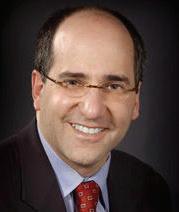
Osteoporosis is often called a “silent” disease because people typically have no symptoms. They often don’t know they have it until they break a bone in an unexpected way. Osteoporosis develops when bone mineral density and bone mass decrease. This can lead to weakened bones and an increased risk of a fracture. The hips, spine and wrist are most susceptible.
The chance of developing the disease increases as you get older, and women are at greater risk. Osteoporosis or its precursor, osteopenia, affects more than half of adults ages 50 and older in the United States. Osteopenia is a loss of bone density that is not as advanced as osteoporosis.
National Osteoporosis Awareness Month in May is an opportune time to discuss ways to promote good bone health, according to experts at Hospital for Special Surgery (HSS), which has an outpatient location, HSS Long Island, in Uniondale.
We often think of our bones as if they were Legos that support our body, but they are much more than that. A bone is living tissue that is affected by our hormones and by the nutrients, vitamins and minerals we consume. Peak bone mass occurs at the time of puberty and into our 20s and early 30s. However, even as we age, our body constantly creates new bone.
It’s normal for women to start experiencing a decrease in bone density when they enter menopause, according to Dr. Jessica Starr, an endocrinologist at HSS. This happens due to hormonal changes and is generally a slow process. “Breaking a bone after falling while in a standing position could be a sign of osteoporosis,” she said. “Any fracture should prompt a discussion of bone health with one’s doctor.”
Osteoporosis is diagnosed with a bone density test, a quick and painless type of x-ray that provides information about bone see OSTEOPOROSIS on page 10B
Plums, delicious and versatile fruits, belong to the Prunus genus and come in a variety of colors, including red, purple, and yellow. Bursting with flavor, plums are enjoyed worldwide. Their availability is seasonal, typically ripening from late spring to early autumn, depending on the specific variety and geographic location. During these months, plums thrive in temperate regions, benefiting from warm temperatures and abundant sunlight. The sweet and juicy flesh of plums makes them perfect for snacking, baking, or adding to jams and preserves. When the seasons change and plums grace the markets, it’s time to indulge in their lusciousness.
Ingredients:
4 large or 6 small, ripe purple plums
1 jalapeno pepper
1 red bell pepper
1 small red onion
1 lime or 2 Tbsp. of lime juice
Directions:
Cut plums around the pit into small chunks. Cut off stem of jalapeno and red pepper, remove
seeds. Cut ends of red onion, remove skin. Finely dice jalapeno, pepper and onion. Place all ingredients in a bowl, squeeze/pour lime juice over the top and mix. Makes nine, half-cup servings.
Recipe Tips:
• For more or less heat, adjust the amount of jalapeno.
• For ripe plums: choose plums with dark/smooth skin, free of discolored or wrinkled spots.

• Store ripe plums in the refrigerator up to four days. If plums are not ripe, store at room temperature until soft.
• Serve with tortilla chips; on chicken, pork or other types of meat, in tacos or on salads.


• Refrigerate leftovers for two to three days in an airtight container.

—American Heart Association Harvest of the Month recipe collection



strength and the risk of a future fracture. Recommended screenings and appropriate treatment are important. Healthy women are advised to have an initial bone density screening at age 65. For men, it’s age 70.
Earlier screening is recommended for women with certain risk factors for bone loss, such as a family history of fractures or the use of certain medications such as steroids. Those who consumed very little calcium in younger years, had an eating disorder, smoke or consume excessive amounts of alcohol may also be vulnerable to accelerated bone loss, Starr noted.
Anyone with a diagnosis of either osteoporosis or osteopenia should talk to her doctor to develop a strategy to prevent further bone loss, she said. The plan may include lifestyle changes and possibly medication. “There’s no one-size-fits-all approach to treating osteoporosis,” Starr explained. “Different medications are available, and treatment should be tailored to the needs of each individual.”


A healthy lifestyle is important to maintain good bone health or



prevent further bone loss if one has osteoporosis or osteopenia, the HSS experts explain. Getting adequate calcium and vitamin D; consuming a nutrient-rich diet that includes all the major food groups; not smoking; and engaging in weight-bearing and resistance exercises can help build and preserve bone mass. Excessive alcohol consumption can also lead to decreased bone density.
“It’s best to get calcium and vitamin D from our diet. Individuals should try to get at least half of their daily calcium from foods such as dairy products, dark, green leafy vegetables and high-calcium fish like salmon and sardines,” Starr explained.
Weight-bearing exercises, such as walking and dancing, are excellent. Muscle strength training is also important for bone health and balance. It’s not only important to exercise, but to move safely when lifting a package or engaging in other activities. It may take some effort, but it’s important to lead a healthy lifestyle today to maintain bone health in the future. For a wealth of information on osteoporosis and recommendations for daily calcium and vitamin D intake, visit bones.nih.gov.
—HSS Long Island






